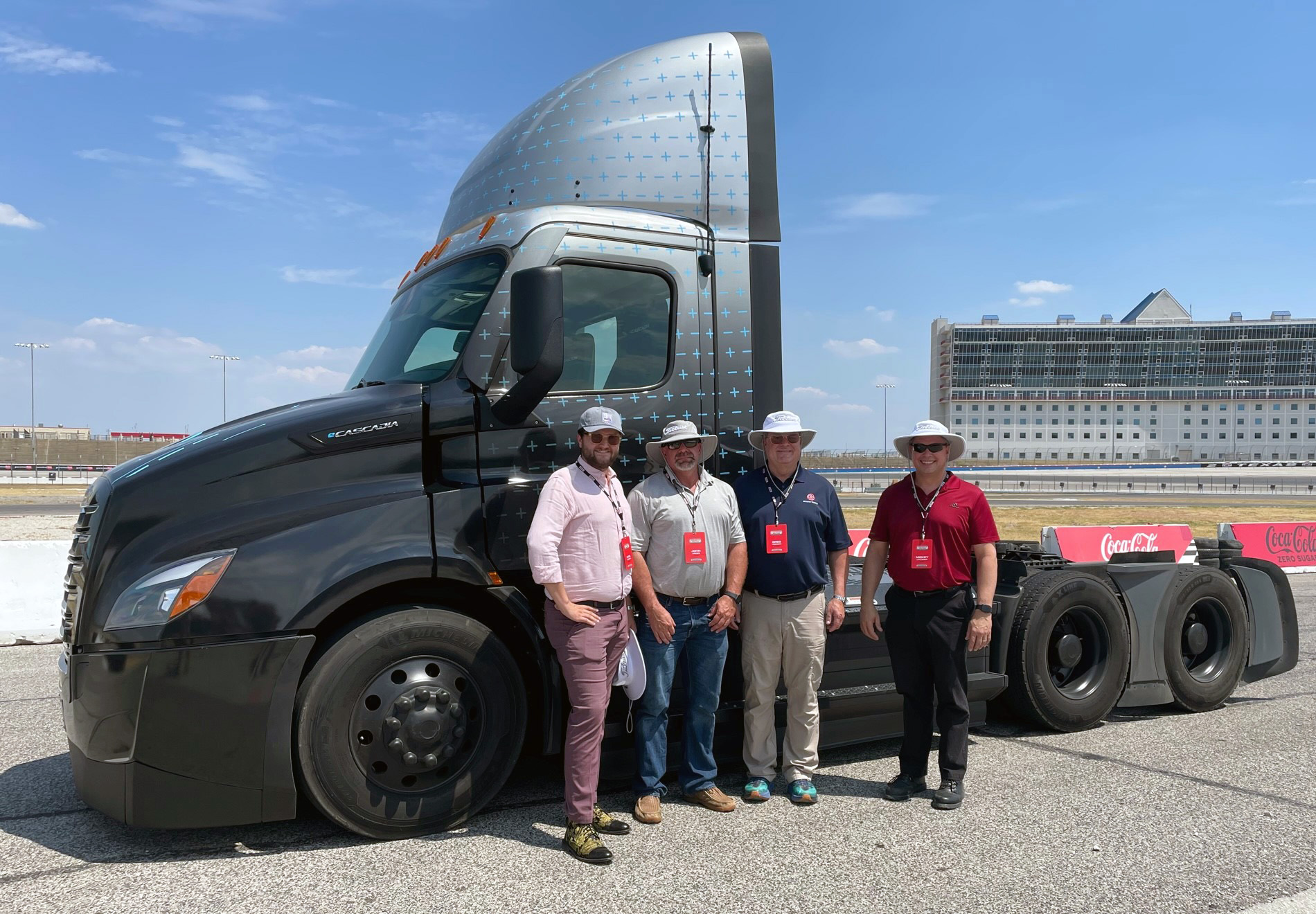 Members of Groendyke Transport leadership take a test drive of the all-new battery-electric Freightliner eCascadia day cab at Texas Motor Speedway in July 2022.
Members of Groendyke Transport leadership take a test drive of the all-new battery-electric Freightliner eCascadia day cab at Texas Motor Speedway in July 2022.
It’s inevitable that someday the trucking industry will switch to an alternative fuel source to power its equipment.
Right now, the hot ticket is electric vehicles, with many government bodies, particularly the California Air Resource Board (CARB), pushing for this exclusively. But other options exist, including hybrids, hydrogen fuel cells, renewable diesel, and clean biodiesel.
Especially with the push for legislating this change, I believe it is critical for all of us in the tank truck industry, the trucking industry at large, and even the general population to stay informed of the available options and the implications of decisions in this area.
At Groendyke Transport, we care about the environment and the essential service we provide to our nation and its economy. We know a change is needed, and we advocate for thoughtful, sustainable, and achievable solutions. Given the importance of trucking to our nation’s economy, it is important that we seek a practical set of solutions and get it right.
As second vice chairman of American Trucking Associations and a board member of National Tank Truck Carriers, I’ve dove deeply into a recent study by Roland Berger on what it would take to electrify the entire trucking industry. Roland Berger is a management consulting firm committed to helping its clients create sustainable change in a decarbonized future.
The study is eye opening, to say the least.
It shows a bottom-line cost of $1 trillion to move the industry to all-electric fleets, and it looks primarily at infrastructure. It doesn’t cover the cost of new, somewhat unproven, battery-electric tractors, which can cost two to three times more than their diesel-powered equivalents, according to market research.
Still, the study covers many parts of electrification we may not think about.
Typically, when we think of electric vehicles, we think of batteries and charging stations, both inside the fence and on road, as the main infrastructure needs and costs. But this study includes the need for significant upgrades to our electricity supply and grid networks, including power stations and substations.
Roland Berger has provided both a one-page summary and a more complete summary of the report.
It’s an interesting read, and I encourage you to give it a look through. Just as importantly, I hope we can all find ways to make our voices heard by regulators and legislators as this industry change unfolds. Transportation represents one in every 18 jobs, and more than 70% of the goods transported in the U.S. do so by truck. Our voices should play an important role in this discussion.